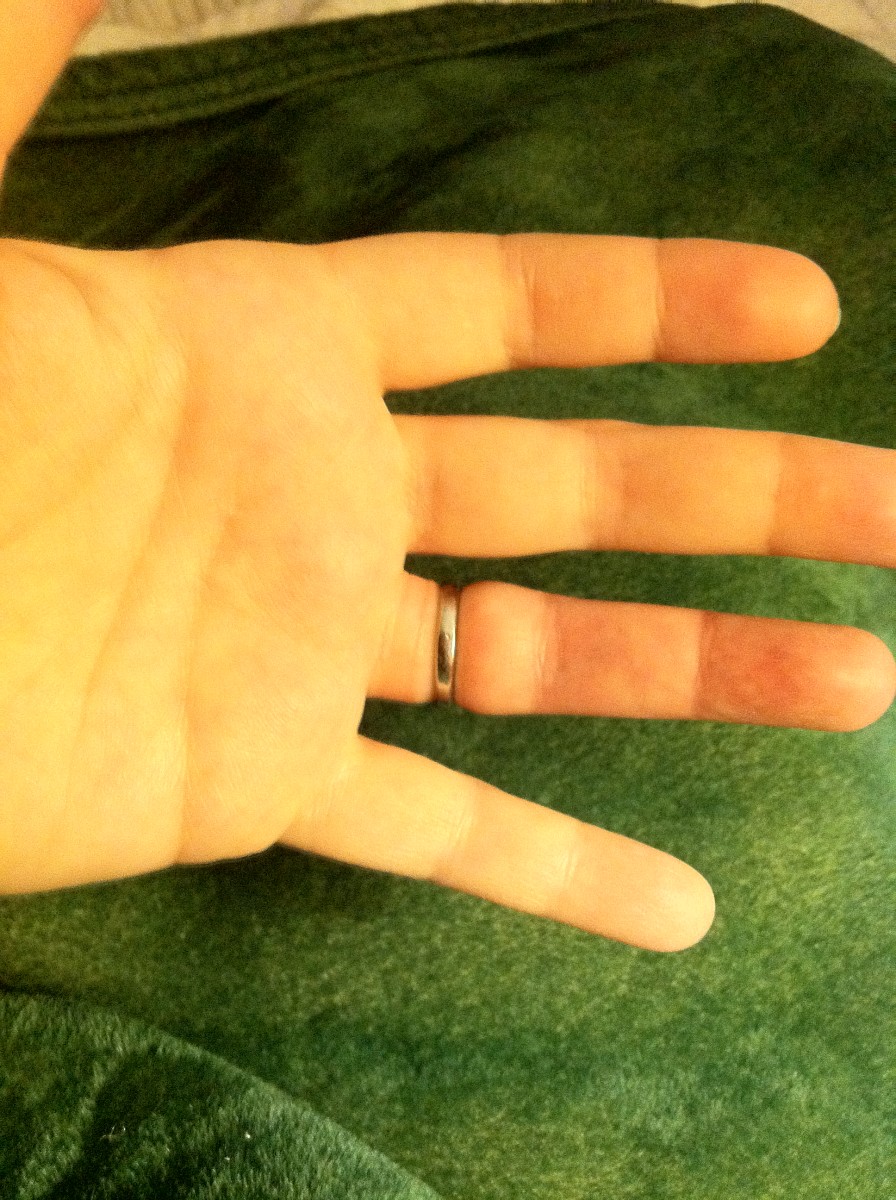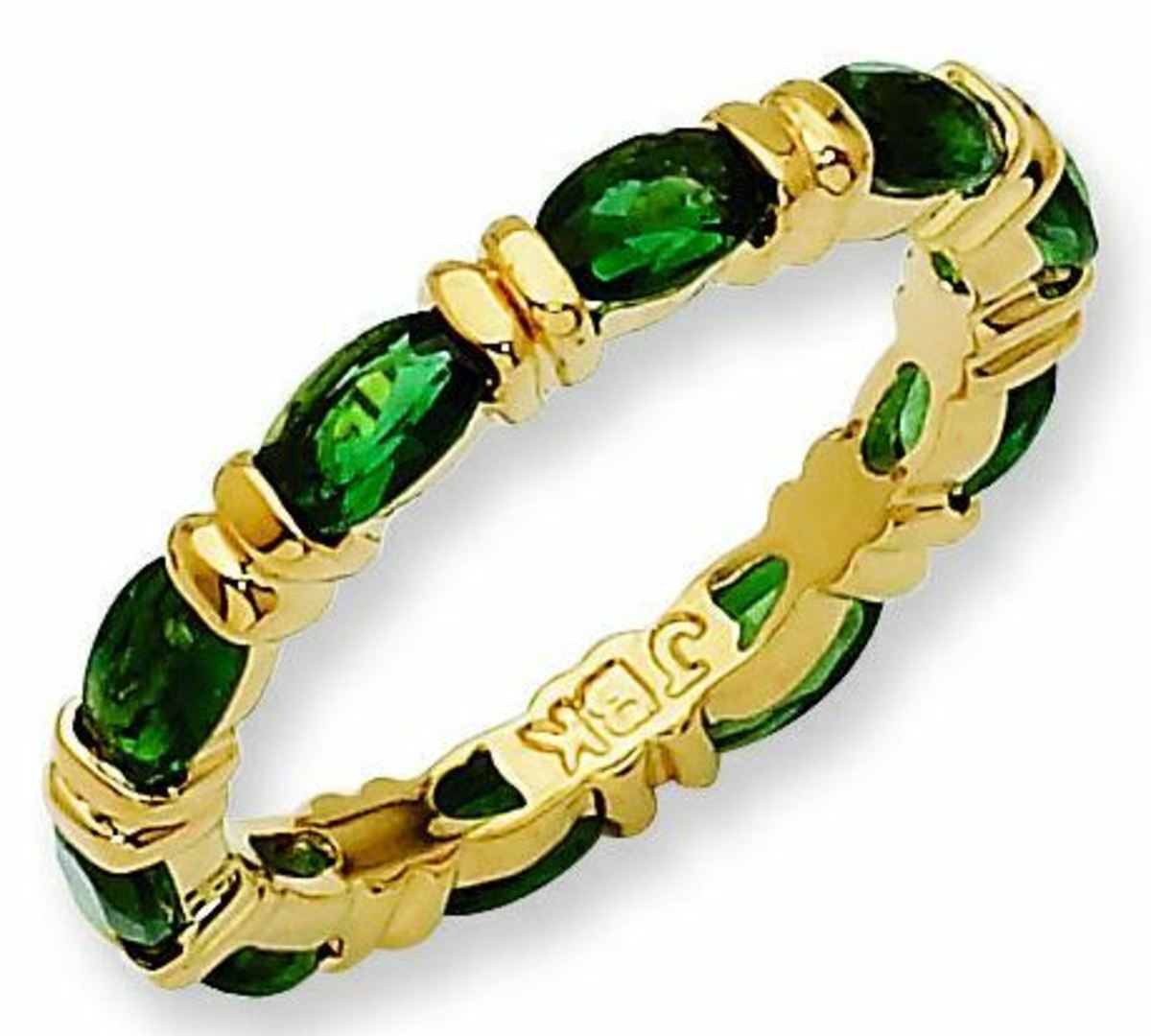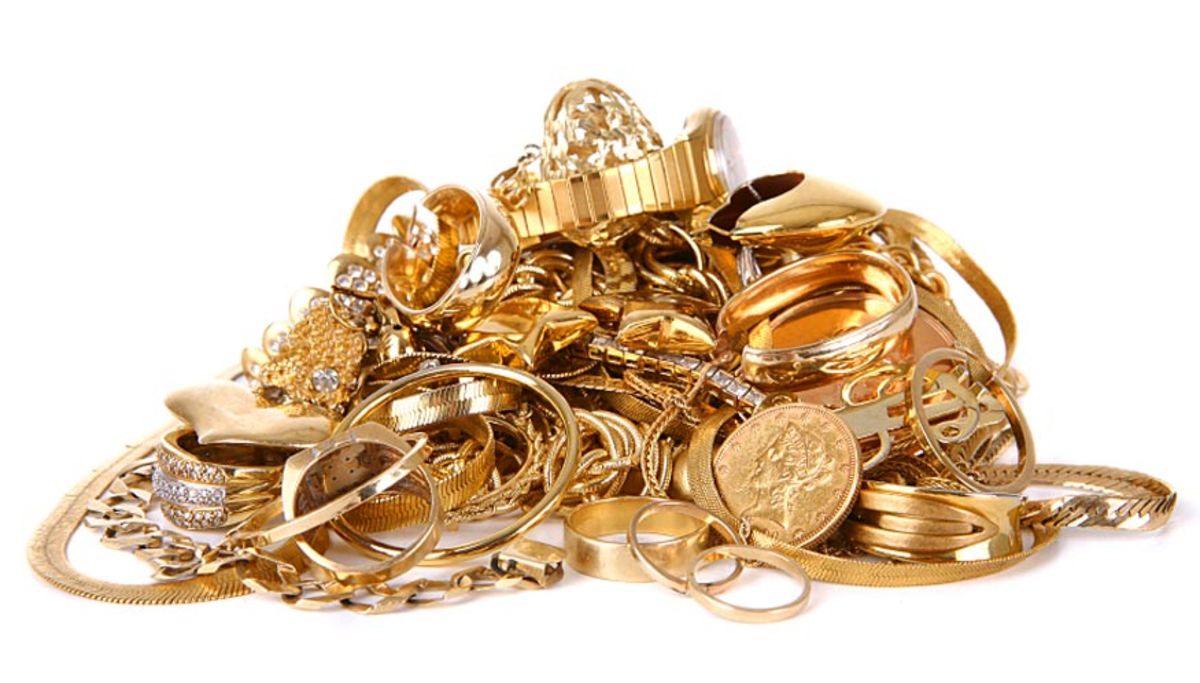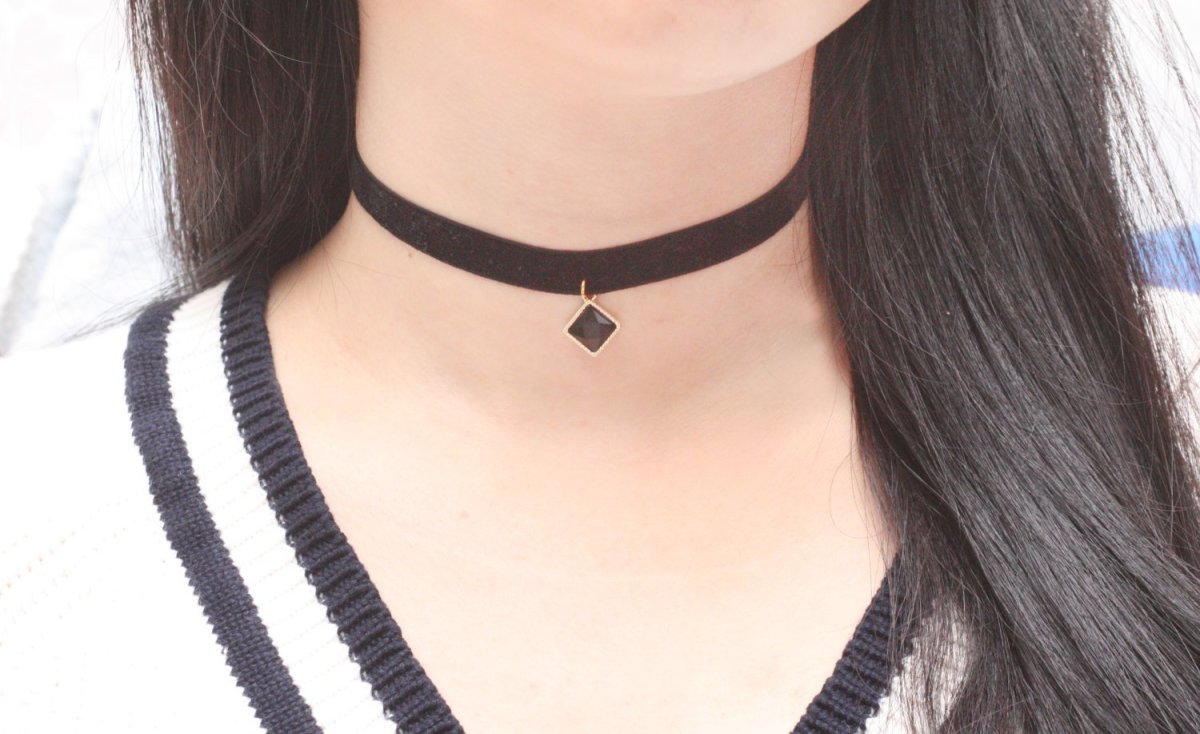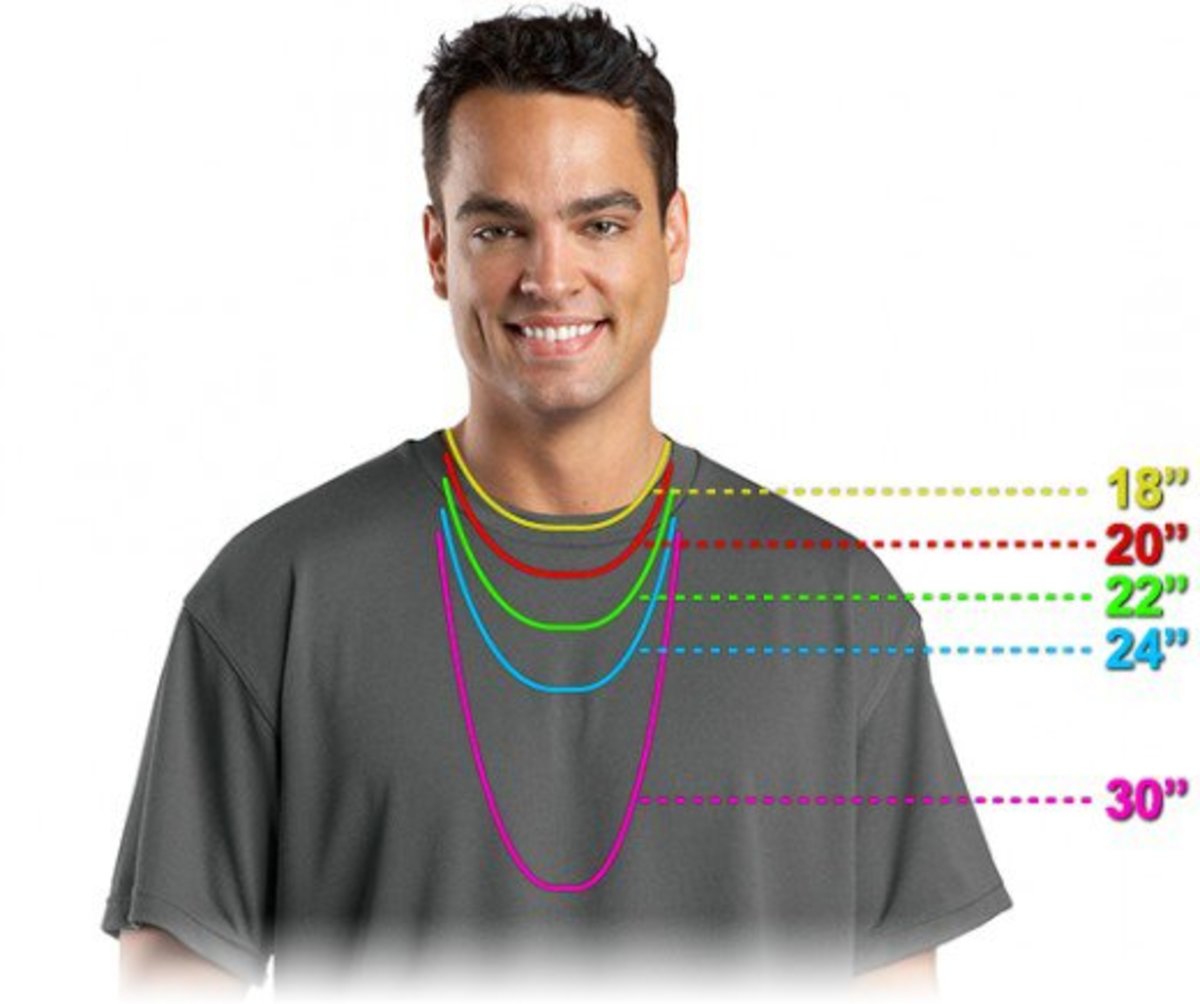Fine Jewelry Appraisals: The Good, The Bad, and the Costly
Is That a Diamond Report Wrapped Around Your Finger?
If you've ever bought a diamond ring, you know that it usually comes with more than just a box. Along with a receipt, maybe a little tissue and a business card, you might find two pieces of paper: a diamond 'report' and and an appraisal.
As fussy as some people are about diamond reports, you'd think buyers would be tempted to fold a G.I.A. certificate up up and wrap it around their finger in lieu of an actual ring!
Ultimately, you should enjoy the diamond, not the paperwork that you keep in a safe place at home or in a safe deposit box. Regardless of the source of the report--the Gemological Institute of America, the American Gemological Society, the European Gemological Laboratory or Professional Gemological Services, they all have a disclaimer: their grading is not a guarantee.
That doesn't mean that paperwork isn't important. Having a diamond report (even a lousy one) will give a skilled jeweler a clue as to what you might have had, if your jewelry is lost or stolen.
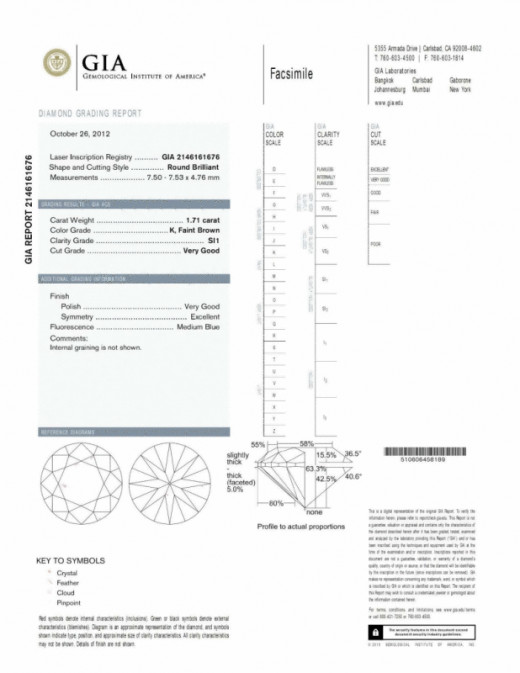
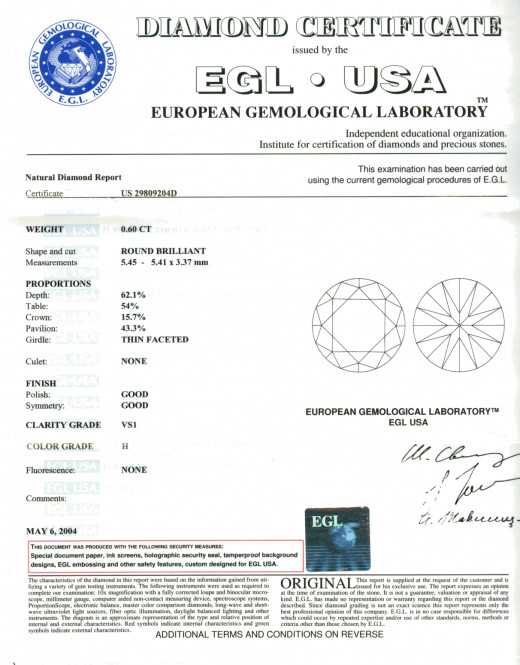
The GIA and EGL Reports, Above, are NOT Appraisals
A diamond certificate is supposed to be an independent opinion from a skilled gemstone expert regarding the quality of the gemstone. Reports do not list a replacement value.
An insurance replacement appraisal is a tool to help you replace a lost or stolen item, and once in a while, to help describe property that has been recovered from a theft or burglary.
If you purchased a smaller diamond ring, or an estate diamond, you many not get an independent certification. That's okay. Sometimes I sell larger estate diamonds based on my own grading, often after I teach my client enough to know that my analysis is fair.
When You Don't Need an Appraisal
Contact your homeowner's or renter's insurance company. Sometimes they automatically cover jewelry losses up to $500 or $1500. If you know that you have an "all peril" policy and your entire jewelry collection is under the limit, just put your receipt in a safe place--a safe deposit box, mom's house, etc., along with a picture of your ring.
If you decide that your ring should remain a private asset, you might not want to insure it. Once you insure it, it's easily traced as your asset.
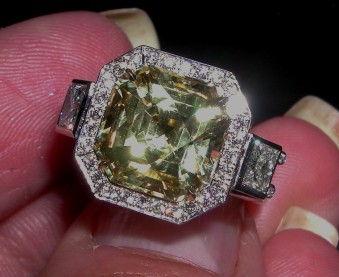
Why a Good Appraisal Isn't a Bad Idea
Usually it's wise to get your ring insured. A good appraisal will help to replace your ring, should it be lost, stolen, or (shudder) switched.
If you have a poor appraisal, a good insurance company may refuse to cover your ring: if it's poorly described, how could they replace it in the event of a theft or loss?
How to Identify a Lousy Appraisal
Take a look at this appraisal. When you have finished reading it, try to picture the jewelry that's described in this official looking document.
The only reason that I left the company name on the scan is that this place has been out of business for many years. Quite a few of my clients are from the Gallatin Valley: if you have an appraisal from this company, you might want to have your jewelry re-evaluated.
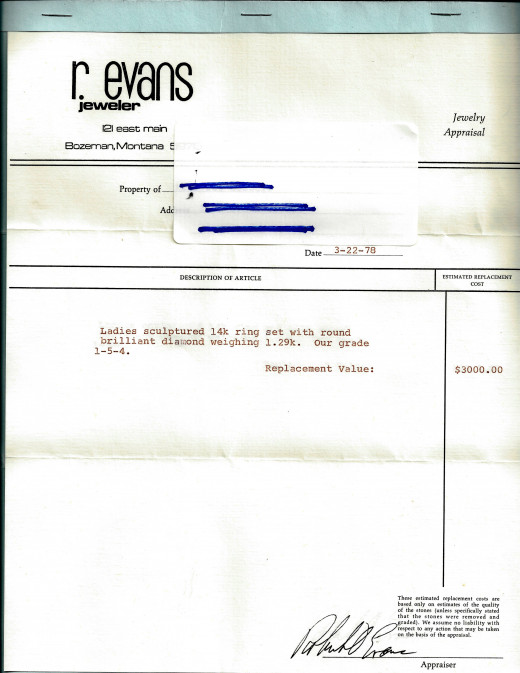
It Looks Official!
How many problems can you spot on the appraisal (above)?
*There is no description of the setting.
*What are the color and clarity of the diamond? The old AGS numerical scale has been displaced, worldwide, by G.I.A. standards.
*This appraiser does not know the difference between "karat" and "carat". Karat is the purity of the gold alloy (14 karat gold), The description of 1.29k is meant to indicate "carat".
*The person who brought this in thought the diamond in the center of this ring was 1.29 carats. The center was .69 carats! The "1.29 k" description is meant to indicate "carats, total weight, which in this ring, included six baguettes and over two dozen smaller rounds. A RING WITH 31 diamonds that total 1.29 carats is NOT THE SAME VALUE as one diamond that weighs 1.29 carats!
*What about dimensions? A skilled jeweler can read four sets of numbers (length, width, depth, and table at the very least--often pavilion depth, crown height and other angles are included in the description of a diamond's dimensions).
*Along with dimensions, especially if a diamond is a round brilliant, there are established parameters for the quality of cut. Is this diamond a 'proprietary ideal cut'? A premium cut? A Class III G.I.A. cut?
*How is the diamond set? Is it held between two tiny, wispy prongs, is it set into a full bezel, a six prong head, an integral basket? Is it channel set or invisible set? Perhaps it's tension set.
*What is the alloy? Gold, platinum, palladium? And the purity? 14 karat, 18 karat, 900 fine?
*Is the setting new, estate, vintage or antique? What is its condition? Has it been altered or restored?
*What is the weight of the setting in pennyweight and/or grams?
*What is the ring size?
*Are there any hallmarks (inside the ring, by law, the purity of the gold must be stamped)?
*What are the basic dimensions of the setting? In inches (necklace, bracelet) or millimeters? If the setting is not a 'stock setting', perhaps other dimensions should be recorded on the appraisal.
Overcooked Appraisals
If you have an 'important' piece of jewelry--a 3 carat diamond ring worn by Mae West, a natural fancy color diamond, a signed Cartier brooch from the 1940s, then you might need a detailed description.
If heirs are trying to equally divide a significant jewelry estate, or you just love details, go ahead, dive in.
If you are considering sending a piece of jewelry to be auctioned, don't have it appraised first. Contact the auction house and they'll walk you through their process. It's a waste of time and money to have redundant appraisals that might not be acceptable to the auction house.
I've seen six-page appraisals for very simple diamond rings. It's silly. It's a waste of time, money and expertise. An insurer does not need to know that your appraiser has a "G.I.A. stereoscopic microscope with upgraded Zeiss optics and a capacity to magnify up to 80X within a dark field."
If an appraisal doesn't fit on one or two pages, it's usually (though not always) a waste of paper.
One of My Appraisals--But Please, Don't Ask for Me to Write One for You
Please don't think I am advertising to do appraisals. I am not soliciting business here. As a matter of fact, I do not write appraisals for people who are not already my good clients. I don't have time to evaluate, for insurance purposes, jewelry that you bought elsewhere.
I am trying to perform a service. If you own fine jewelry, and it's poorly appraised, if something happens to it, it's next to impossible to replace.
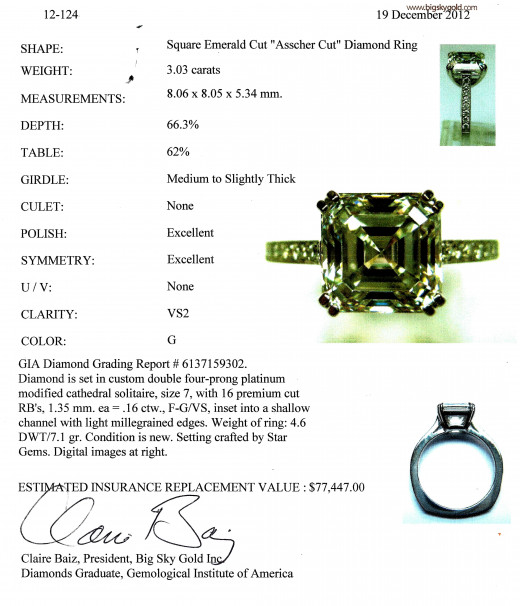
Notes on a Good Appraisal
I believe that a good appraisal should be written on one page (with a disclaimer, 'certificate' copies, more photos, etc. on page two).
My diamond appraisals are based on the format of the Gemological Institute of America (G.I.A) Diamond Reports. This makes it easier for anyone who might have to insure or replace the jewelry to follow along.
A good report will feature the ENGINE of the jewelry--in this case, it's the diamond in a ring that I sold over the Holidays. The CHASSIS is described in the paragraph below. In this case, I took three images of the Asscher style ring: it was custom made for this client, based on our CAD design, and it was distinctive in top, side, and "through the finger" views.
Holy Cow, Look at that Appraisal Value!
Here's the reality: there is collusion between the jewelry and insurance industries.
If you don't know what that means, go look it up :)
Jewelers like me, who sell at a small commission over our legitimate wholesale cost, need to appraise the items we sell at a price that's often much higher than your purchase price.
Why? Because if something happens to the ring, I need to build in enough cushion for your unnamed insurance company to be able to replace the lost item at a fair retail price.
Insurers have to go shopping for a piece of jewelry within a specific subset of variables. That takes manpower. For an insurance replacement contract for ring like this, a jeweler like me might have a 5-15% profit cushion. That isn't a whole lot...according to a recent article in a respected jewelry trade magazine, most brick and mortar retailers in the jewelry industry need around a 20% margin just to keep the door open.
Let's Do This Again in Five Years
Go look at the dates on your appraisals. Five years ago, gold was $730/oz. In February of 2013, as I'm writing this, gold is hovering aroud $1665/oz.
Diamond prices change.
The condition of your ring affects the value on your appraisal as well.
It's a great idea to bring your jewelry in for inspection annually, and for re-evaluation every five years. Expect to pay a small fee to have your appraisal updated: it takes time and expertise to evaluate the current market price and the insurance replacement value of your jewelry.
Questions?
If you read this blog and have a question, please feel free to ask. I'll do my best to give you an honest and timely response.

